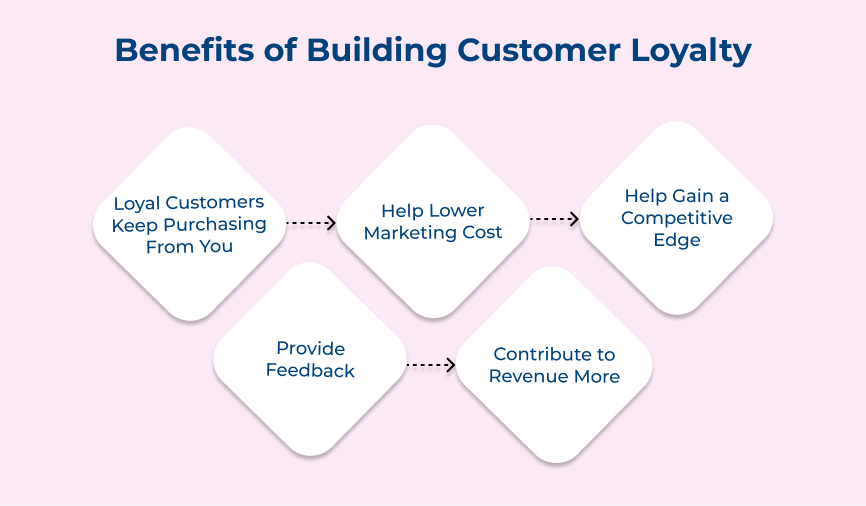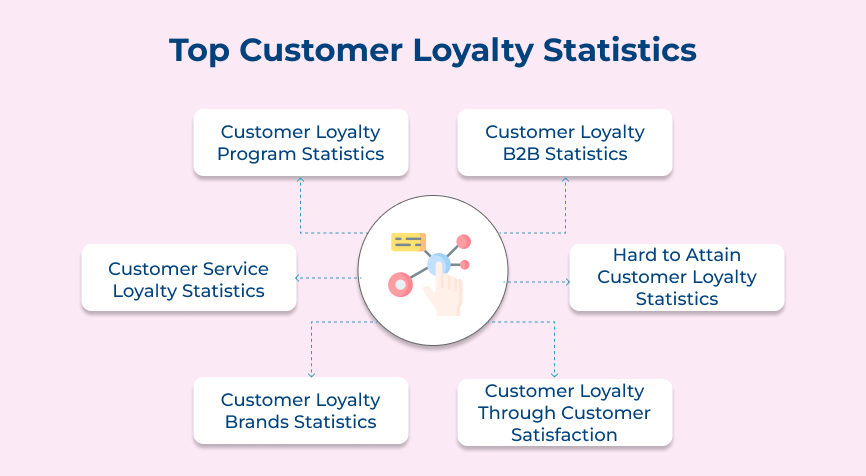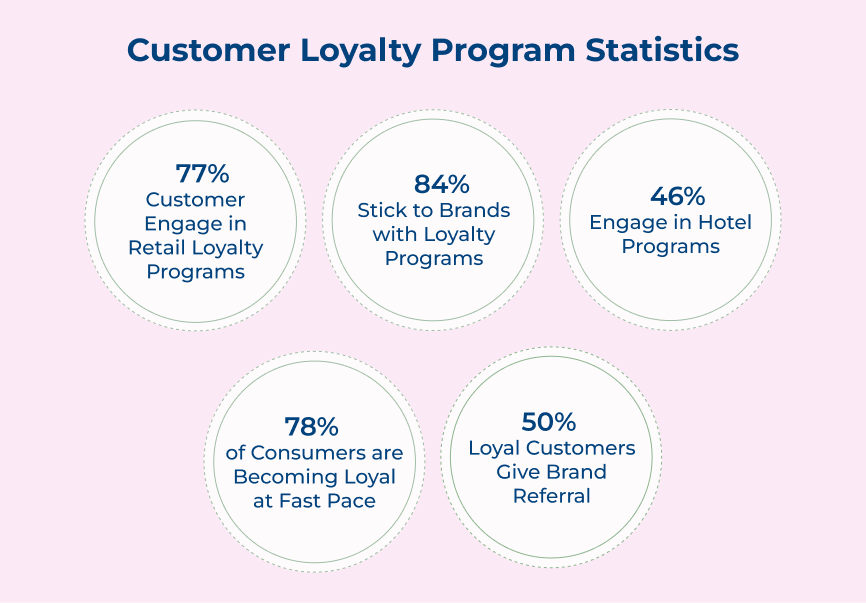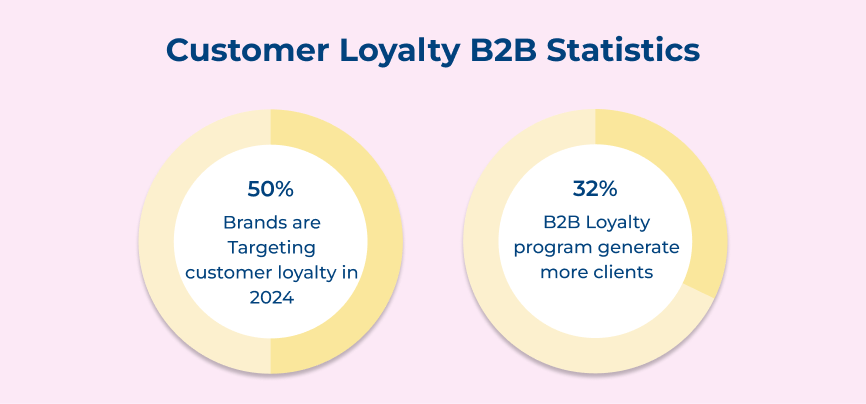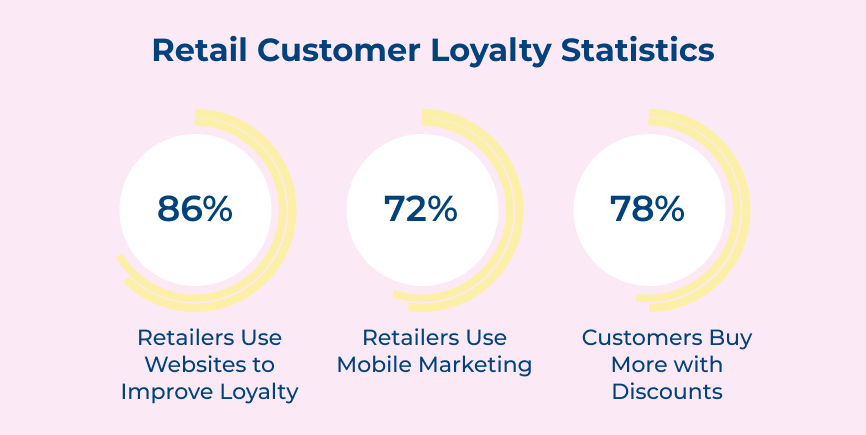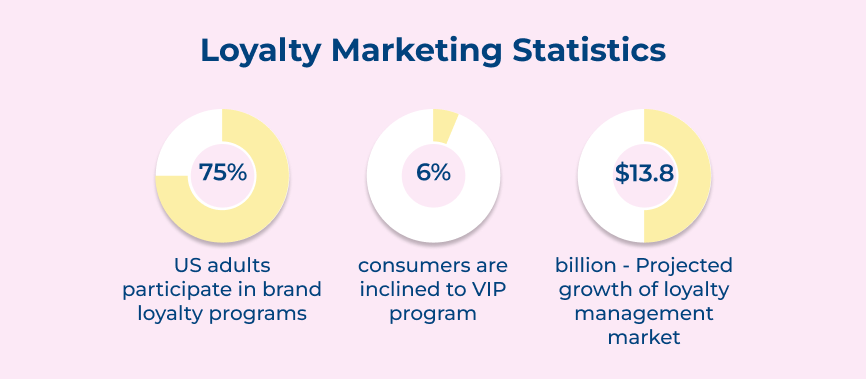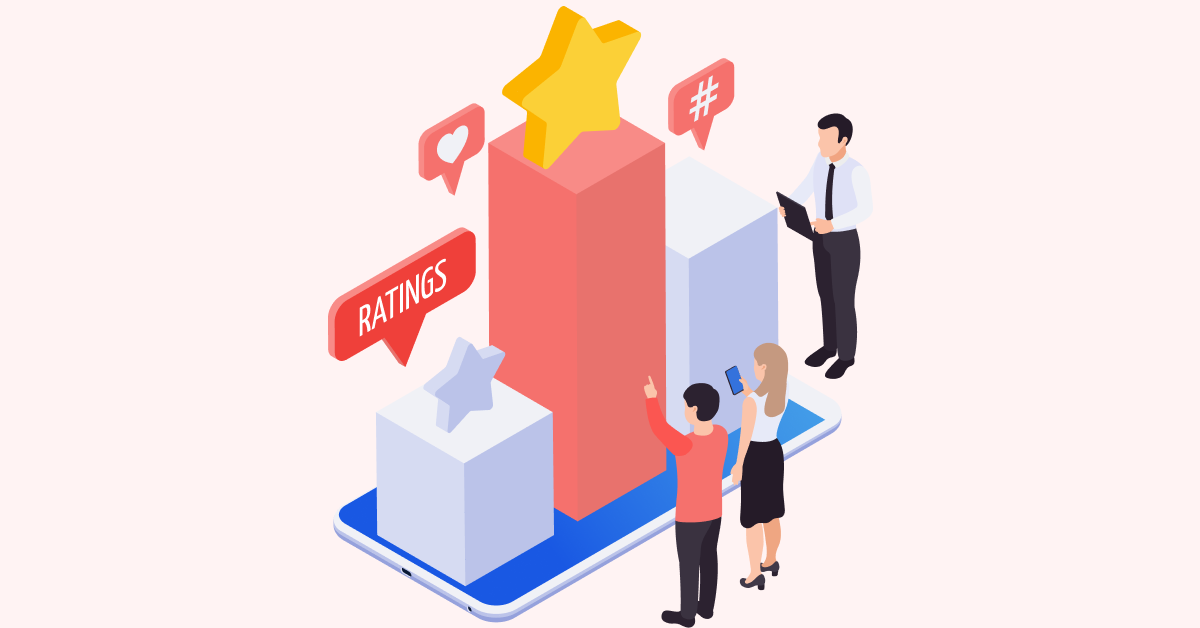5. Brand marketers’ top priorities in 2018 are customer experience (25%), brand awareness (18%), new customer acquisition (18%), customer retention/loyalty (17%) and engagement (15%).
Understanding the statistics is significant for businesses as it highlights the importance of customer loyalty in driving success. Focusing on strong relationships with existing customers can boost customer retention statistics, drive repeat business and improve profitability. The data helps businesses grasp the importance of positive customer experiences for long-term success.
6. 70% of businesses said they were improving client experience because customers expect more personalization, while 60% simply want to improve customer loyalty.
The statistics highlight the importance of understanding customer needs and preferences. B2B businesses can build stronger relationships with their customers and drive revenue growth by prioritizing client experience. Taking a customer-centric approach can help businesses customize offerings for client needs, ensuring long-term B2B success
C. Hard to Attain Customer Loyalty Statistics
The following statistics demonstrate how difficult it is to achieve genuine customer loyalty and what that means for businesses striving to retain a devoted customer base.
7. Half quit doing business with a company immediately after a bad experience, one-quarter took to social media and 54% started engaging with other companies.
Customer loyalty is crucial for the success of any business. Businesses should focus on providing exceptional customer service to make it easier to retain customers. Understanding the significance of the statistics can help businesses take proactive steps to improve customer satisfaction.
8. The majority of consumers (62%) don’t believe that the brands they’re most loyal to are doing enough to reward them.
The statistic sheds light on the growing challenge that companies face in promoting true customer loyalty. It has become increasingly difficult for brands to maintain a loyal customer base with competition constantly on the rise. Businesses need to update loyalty programs to engage and reward customers effectively to stay competitive.
9. According to the advisory firm McKinsey & Company, 25 to 50% of a brand’s highest-spending customers also shop with its competitors.
The statistic underscores the challenge of retaining loyal customers. Companies must prioritize exceptional customer experiences, personalized services and consistent communication to build trust. Continuously engaging with customers and meeting their needs helps businesses retain customers. Loyalty is earned not guaranteed.
D. Customer Loyalty Through Customer Satisfaction
Below are the customer loyalty statistics that will help you improve customer satisfaction and build loyalty in businesses.
10. 44% of US consumers are loyal to brands that engage them by asking for help in designing or co-creating services and products.
Customer satisfaction is key to building customer loyalty. Engaging customers in the creative process enhances ownership and connection. When customers feel valued, they are likely to stay loyal to the brand in the long term.
11. Effective brand representatives drive 3.9X higher member satisfaction.
Effective brand representatives play a crucial role in driving customer satisfaction, which in turn leads to higher member satisfaction. The representatives offer great service, forge connections with customers and establish trust. Businesses can ensure long-term success by prioritizing customer satisfaction with trained brand representatives.
12. 87% of satisfied customers are more likely to upgrade or add services and are less likely to cancel.
The statistics highlight the importance of focusing on customer satisfaction to retain and grow a loyal customer base. Prioritizing excellent service and meeting customer needs, can increase customer loyalty. Customer satisfaction is key to building a strong relationship with customers and ensuring long-term success.
13. 51% of customers feel that companies care about them and go the extra mile to keep them happy.
Businesses must ensure customer satisfaction to retain their customer base amid numerous consumer choices. Here are some statistics that highlight the importance of customer loyalty through customer satisfaction:
14. 49% of customers don’t know whether there is an app associated with their loyalty program
Many businesses leverage mobile apps to enhance the customer experience and drive sales. Providing exclusive offers through mobile apps can incentivize customers to make repeat purchases and strengthen their loyalty.
15. 77% of customers would recommend a company to a friend after having a positive experience.
The stats here show there’s a strong link between customer satisfaction and loyalty. When customers receive a positive experience, they are likely to become brand advocates, promoting the company through word-of-mouth recommendations. Organic marketing can significantly impact a business’s growth and reputation, underlining the importance of consistently delivering high-quality customer experiences to attract new customers.
E. Customer Loyalty Brands Statistics
Let’s explore the latest statistics on customer loyalty and examine the factors that influence customers to remain loyal to specific brands.
16. Nine of the top 10 brands in the 2018 Top 100 loyalty leaders ranking are digital brands, with Amazon taking the NO. 1 spot.
The statistic highlights the importance of digital presence in building strong customer loyalty. Other businesses can implement it by focusing on creating a seamless online experience, personalized communication and providing value-added services. Utilizing digital platforms for customer engagement and efficiency can lead to lasting success.
17. The top three brands on the Loyalty Leaders list are Amazon in online retail, Google for search engines and Apple for smartphones.
The brands have set a high standard for customer satisfaction and loyalty in their respective industries. Businesses can achieve success by prioritizing customer service, quality products and innovation to meet evolving customer demands. Prioritizing customer loyalty, can build strong relationships and drive long-term success.
18. 68% of customers said cost was the top factor that influences where they shop, followed by proximity (55%), product selection (53%), online customer reviews (36%) and brand loyalty (34%).
Businesses aiming to boost customer loyalty can focus on competitive pricing, convenient locations, diverse products and exceptional customer service. Addressing the key factors can attract and retain loyal customers in a competitive market.
F. Customer Service Loyalty Statistics
The following customer service loyalty statistics shed light on some factors and strategies to enhance relationships with customers.
19. 88% of respondents indicated that quality is a critical factor in their decision to remain loyal to a brand; 72% identified customer service as a top priority.
The statistics emphasize the importance of delivering top-notch products and excellent customer support to retain customers. Businesses can improve by training staff, addressing customer feedback and offering personalized experiences. Focusing on quality products and exceptional customer service can help businesses build strong brand loyalty.
20. 48% of respondents said that the most critical time for a company to gain their loyalty was when they make their first purchase or begin service
Businesses can focus on personalized interactions, prompt responses to inquiries and proactive communication to ensure customer satisfaction. Prioritizing customer service during the crucial phase can increase customer loyalty and retention in the long run.
Retail Customer Loyalty Stats
Check out the latest retail customer loyalty statistics that highlight the importance of nurturing customer relationships and the considerable impact it can have on overall profitability.






